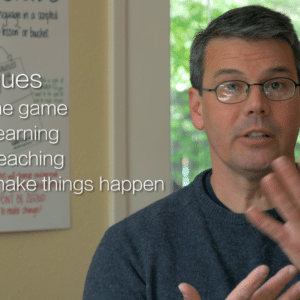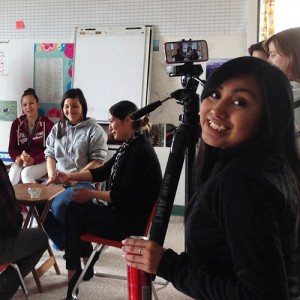[vodpod id=Video.3646521&w=425&h=350&fv=]
The WAYK method/mentoring language generates an ever-growing (and complexifying) collection of “Same Conversations”; reliable, familiar, and consistently repeating back-and-forth dialogues of language play.
The “WAYK?” core conversation, the specific conversation about the pens, stick, rock, around the low table, is the primary laboratory, and first “same conversation”, for learning and applying WAYK. I hope you’ll forgive the ambiguity between the WAYK system, and the “WAYK?” core conversation. The system is named after that first conversation. We’re thinking it may need a different name to lessen confusion, but for now, that is what we call it.
Now, “the Walk” is the second “same conversation“, an application of the WAYK mentoring language to the need for players and community members to have breaks, and be outside. Also, using the principle of “the Walk” you can harvest any outdoor, regular, repeating conversation, such as walks, drives, and visiting the park.
You’ll notice in the video of “the Walk“, that it consists of a series of stops, where players make a circle, say “Come Here, Go There” 3 or more times (“In Threes“), and then move on. When they stop, they yell and sign “Stop!”. They play a version of “Red Light/Green Light”. This is very conscious; if we can get parents talking to their children in the target language, then we have instantly turned the language around to a certain degree. “Moribund” languages are defined by a lack of intergenerational transmission, especially young children. So, on “the Walk”, parents learn to say:
“Go over there! Come here! STOP!”.
This is some basic vocabulary that a parent needs to feel comfortable switching to another language.
Along with that element, the “what is that?” conversation continues, and if you want, and you have some experienced “Walkers” with you, you can throw in “want/have/give/take” too. As always, you scale the proficiency level of the conversation to your progressing players. Mainly, and especially in the beginning, “the Walk” is a chance to interact with the world in very basic conversation, by smelling, touching, running, jumping, climbing, and so on.
All the WAYK techniques, such as “Limit“, “Obviously!“, “Set-up“, and so on, as always, are rigorously applied while on “the Walk”. This is a chance to learn to apply those techniques in a chaotic, dynamic, unpredictable situation. Therefore, it’s a good idea to “limit” the length of “the Walk“, as the further you go, the more odd things will cross your path, and “full” and “sorry, charlie” are a constant danger once you past the 15-20 minute mark. We’ve noticed players seem more reluctant to call “full” while on “the Walk“, so game leaders need to do more work to monitor and make sure they don’t overwhelm the players.





When you stop, is he signing “NOW ALL-OF-US MAKE CIRCLE”? I thought he was signing ROCK CIRCLE instead of MAKE for a while. aslpro.com and lifeprint.com both say to twist your hands for MAKE.
For reasons having to do with Chinuk Wawa, we have gotten into the habit of signing “work” for “make”. If you look “work” up on aslpro.com, you’ll see one wrist bumping into the other wrist, similar to the word for “Rock”, but “rock” is one fist knocking on top of the other.
Ahh, that makes good sense. Thanks.